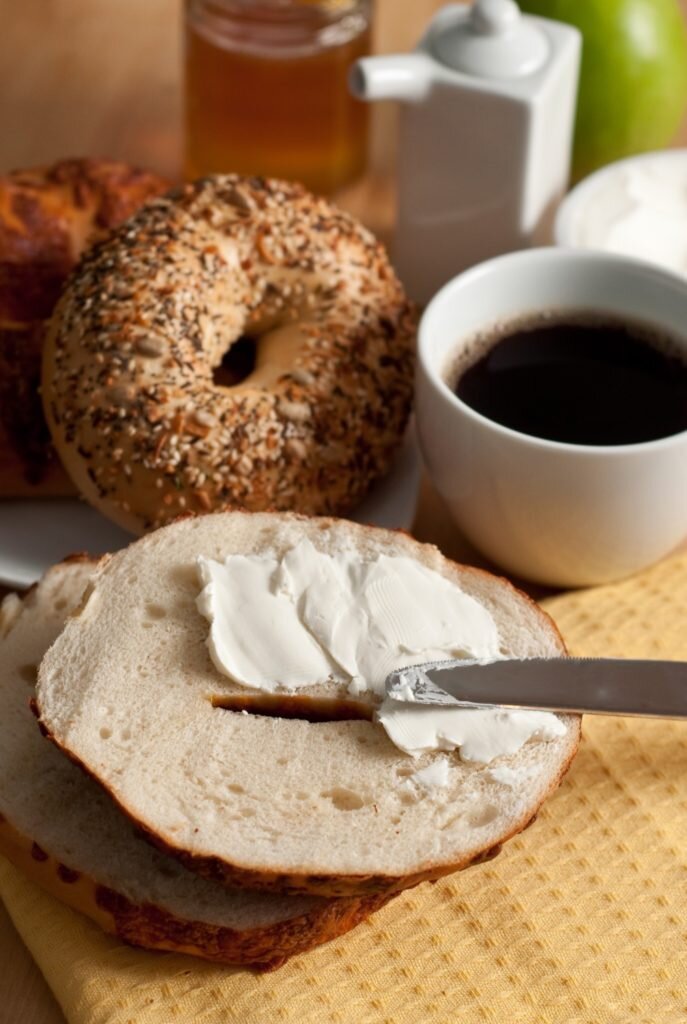You are grocery shopping online. One by one, you type in keywords for the items you need and compare the images, descriptions, and prices that are suddenly laid out before you in backlit splendor. It’s fast, it’s easy, and you don’t have to schlep a heavy cart and a couple of kids through the narrow aisles of a physical store.
But there’s something else happening as you fill up your virtual cart with culinary consumables. Below or to the side of the items in immediate view are recommendations of products the store has thoughtfully considered you might also need, based on your current selection.
And…they are all simply terrible.
Three ways that online food recommendations are undercooked.
Anyone who has done any grocery shopping online is probably familiar with the above scenario. Recommendations are responsible by many accounts for up to 35% of the transaction volume of those e-commerce players who are getting it right. It isn’t any wonder that they have come to be seen as a competitive factor in grocery as well.
But when it comes to online food shopping, recommendations tend to be pretty rotten. Here are a few common examples:
1. Recommendations that are too general

An open secret of grocery recommendations is that the algorithm seems to always think you might be looking for one item in particular—bananas. The reason behind that is confidence. No, not the kind that the grocer has in the freshness of his or her produce, the kind that a machine learning algorithm uses to quantify the probability that some “Event A” will coincide with another “Event B.”
Since the humble banana is consistently one of the top-selling grocery items, its purchase happens to coincide with, well— just about everything else. So no matter if a shopper has just selected basil and garlic or if it is spatulas and beer, over-confident algorithms trained on narrow input mechanisms like SKU and UPC data are going to proffer up the very same suggestion.
Imagine, instead of making generic recommendations based on broad purchase data, that the algorithm “knew food.” It could reach into its knowledge base of recipes and its awareness of “food psychology” and cleverly recommend pine nuts, olive oil, and fresh parmesan cheese to go with that basil and garlic. And then instead of offering you something quite irrelevant, presto…you’d have pesto!
2. Recommendations that are just plain wrong
Another bad recommendation scenario relates to a machine learning concept known as “lift.” Whereas confidence considers the general probability of A and B coinciding together, lift calculates the specific probability of “Event B” occurring when we already know that “Event A” is underway.
That may sound more promising, but it, too, can produce some strange results.
In that scenario, the grocer is not just losing out on the chance to increase their checkout value, they are actually alienating customers with annoying, or even insulting suggestions. That can make for a hairy situation indeed.
Imagine, for example, that amongst 100,000 shopping transactions, 100 include the purchase of a pack of Lender’s frozen bagels, and 50 result in the sale of a Panasonic nose hair trimmer. Neither quantity is enough to have any significant statistical impact.
But now imagine that, just by coincidence, 25 of those Panasonic buyers also happened to be fond of frozen bagels. The recommendation engine would “learn” that one out of four bagel purchasers has a pileous proboscis, and would begin suggesting Nova and a nose-trimmer to go with your Cinnamon-Raisin.
In that scenario, the grocer is not just losing out on the chance to increase their checkout value, they are actually alienating customers with annoying, or even insulting suggestions. That can make for a hairy situation indeed.
3. Recommendations that aren’t for you
There’s still one more mistake that general recommendation algorithms tend to make in the grocery world—failing to calibrate to personal tastes. When it comes to how we eat, variance is extremely high. So even when a recommendation is specific to a particular purchase journey and makes perfectly logical sense, it can still go wrong by failing to recognize a shopper’s personal preferences.

Let’s go back to our Cinnamon-Raisin bagel buyers. But now, the algorithm suggests Philadelphia cream cheese instead. Statistically and logically, we can’t fault that, right?
No, except that if our shopper, in this case, has a history of buying lactose-free dairy products or even organic, dairy and nut-free, vegan, paleo, fair-trade cream cheese substitutes, our recommendation engine would serve both grocer and shopper better by suggesting a product more appropriate for that particular shopper.
Likewise, while a bodybuilder with sliced turkey in his cart is likely to respond well to high-protein, low carbohydrate recommendations like yogurt, chicken breasts, and Brussels sprouts, a mother of three buying the very same item actually needs sliced bread, sandwich bags, and Capri Sun pouches for next week’s school lunches. And please Mom— hold those yucky Brussels sprouts!
Recommendation algorithms were never designed for food before
Considering all that is commonly wrong with online grocery shopping recommendations, we must ask—”What’s going on here? Why have online grocery merchants failed to emulate the success stories of companies like Amazon and Netflix?”
It is simply not possible for a recommendation algorithm to be broad enough to generate product recommendations for industries from beauty to electronics and simultaneously be specific enough to have a deep grasp of a complex industry like grocery.
The technology companies who lead innovation in the online recommendations space are full of extraordinary talent. Their product algorithms exhibit an uncanny understanding of human decision-making nature. But like almost everything in nature, there’s a trade-off—in this case, between breadth and specificity.
It is simply not possible for a recommendation algorithm to be broad enough to generate product recommendations for industries from beauty to electronics and simultaneously be specific enough to have a deep grasp of a complex industry like grocery.
Artificial intelligence that is actually intelligent should be based on highly relevant and industry-specific contextual data and abstract qualities, not just general purchase data.
For grocery recommendations, that means deploying an algorithm which has been trained on recipes, ingredient lists, nutrient disclosures, product attributes, and call-outs. It also means coding in a true understanding of what past purchases reveal about a shopper’s dietary habits and tastes, so that recommendations can be personalized.
One-size-fits-all recommendation engines based on simple shopping heuristics are a recipe for failure in online grocery shopping recommendations. To achieve the full potential of AI in online grocery, you need an algorithm built specifically for grocery.
Using anything else would be, well—just bananas.

